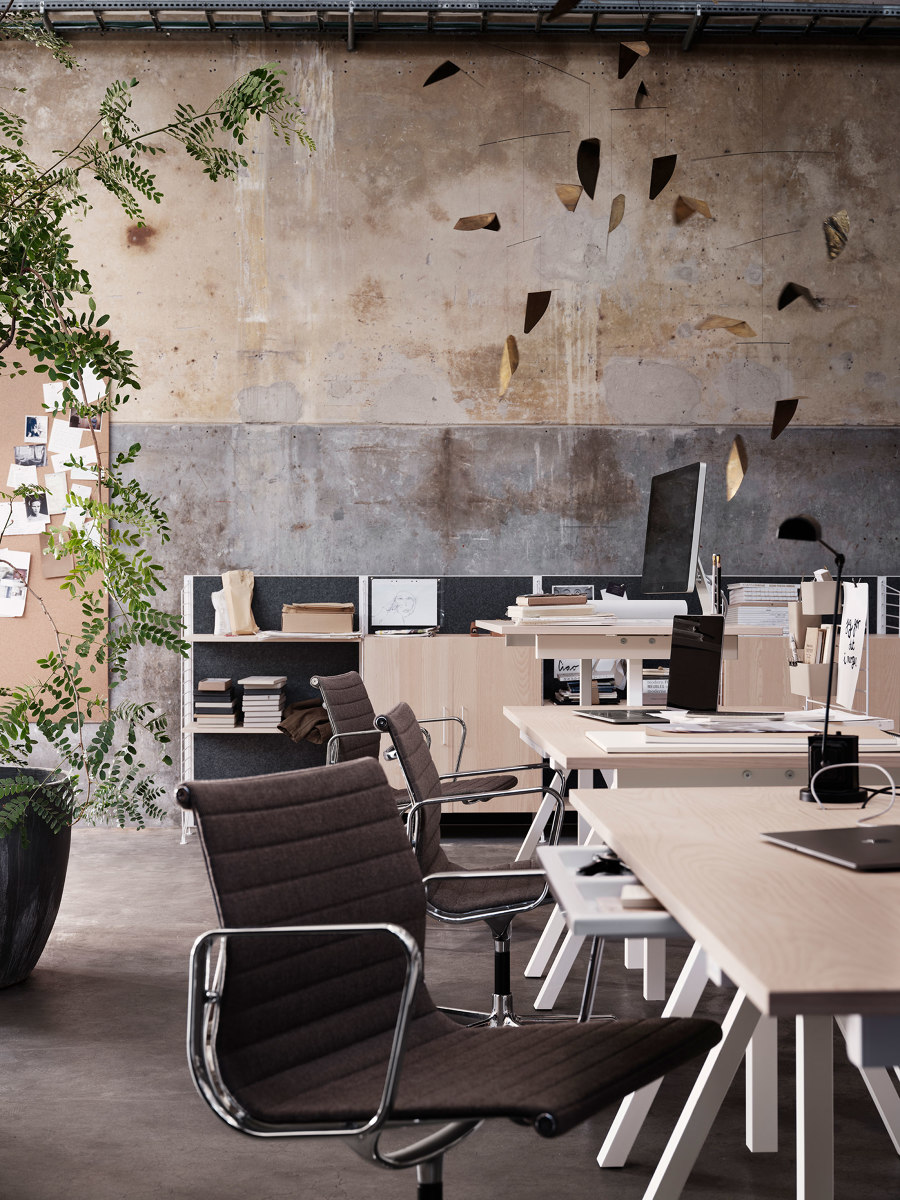String: A lesson in timeless design
Historia de la marca de Emma Moore
Malmö, Suecia
10.09.21
When it comes to creating timeless furniture, there's a lot to learn from modern classics like the String furniture system ...
Designed in 1949, String Furniture has adapted over the years to different uses across different rooms, and different phases of life. A choice of materials allows it to fit with any environment
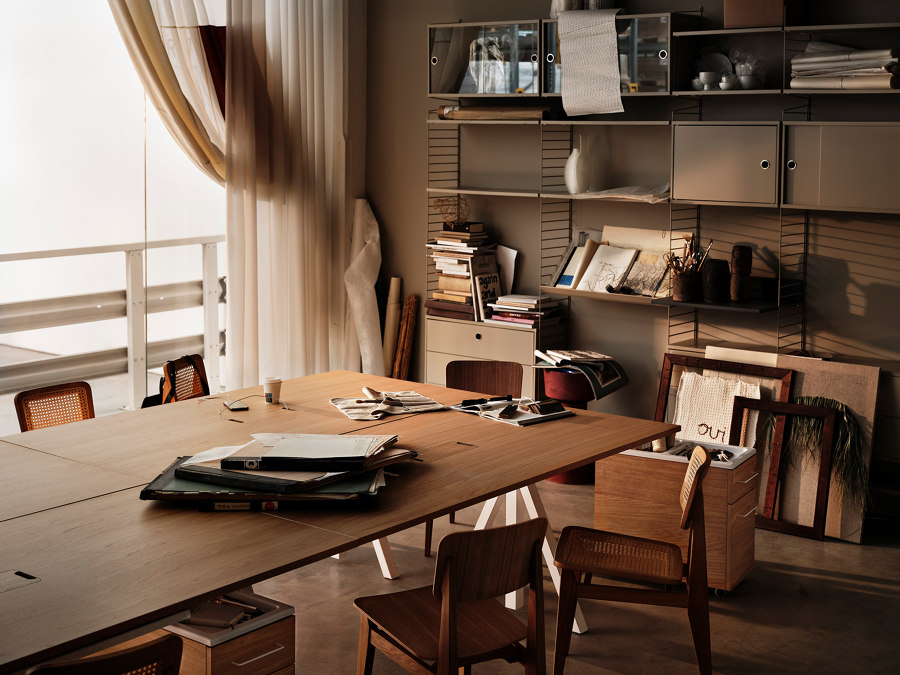
Designed in 1949, String Furniture has adapted over the years to different uses across different rooms, and different phases of life. A choice of materials allows it to fit with any environment
×The climate emergency is ever at the forefront of minds in the design industry, an industry that on the one hand has the potential to threaten ecological balance by generating more and more planet-stifling stuff, but on the other, is populated by people trained to find solutions to problems. The question of sustainability permeates conversations at every level, challenging practices in all areas of the design process. But when ecologically responsible material sourcing and innovation is addressed and when the environmental impact of manufacture is calibrated to zero, then what is left is the increasingly valued quality of durability.
Making to last is becoming something of a panacea in terms of sustainable production. And when it comes to making furniture that endures, a lot can be learnt from modernist classics such as String, the iconic shelving designed by Sweden’s Nisse and Kajsa Strinning in 1949. String answered the call from the Bonnier’s publishing house for a shelving design that was affordable, shippable and easily assembled, allowing Swedish homes to stylishly store books. Winning the competition, in 1952 String went on to gain a stage in the newly built UN Headquarters in New York. Now a comprehensive wall storage system adapted to multiple rooms, it is as relevant today as then. But what makes such a simple shelving design still welcome on our walls today as it was 70 years ago?
In 2014, String Furniture collaborated with Anna von Schewen and Björn Dahlström to develop a collection of complementary office furniture, Works™ including a desk with integrated drawer and pedestal
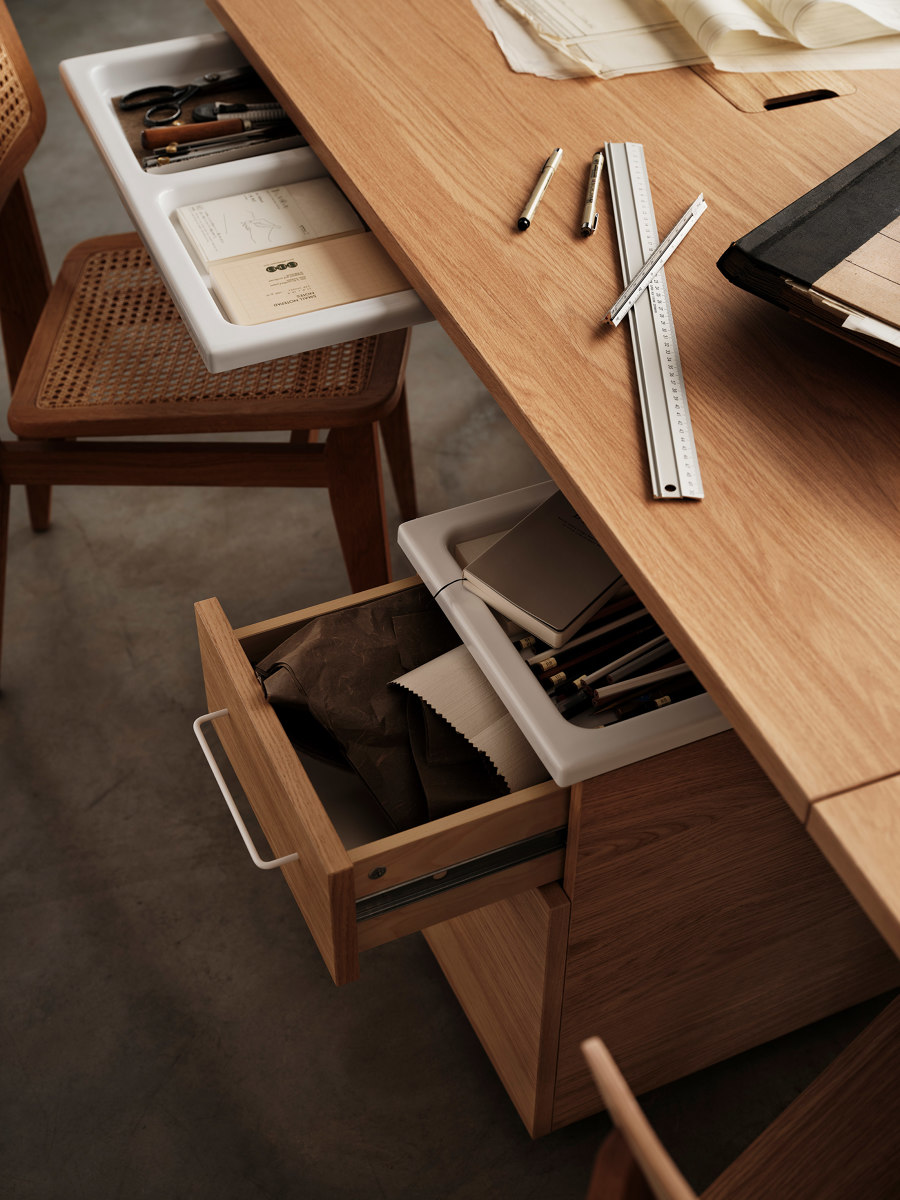
In 2014, String Furniture collaborated with Anna von Schewen and Björn Dahlström to develop a collection of complementary office furniture, Works™ including a desk with integrated drawer and pedestal
×Design that endures depends on a couple of factors: an elevated quality of materials and construction that means a piece will survive life’s knocks (and is infinitely repairable if it does eventually succumb), and the less quantifiable quality of timelessness, which means the sofa you ordered today is not gnawing at your eyeballs after just a few years of service, or the new kitchen isn’t fighting its way out of fashion a year or two down the line.
The magic formula that produces a design classic is ever the conundrum of creatives, but it’s now not just guided by corporate gain, but by the needs of the planet too
‘The simplicity and flexibility is timeless,’ says String’s Creative Director, Magnus Ingerstedt, assessing what it is that makes the minimalist design still relevant today. ‘Also it’s kind of “invisible”. It allows your things and books to show; it doesn’t compete. In 1949, books were a symbol of status and education. Now it’s about curated objects, design and personal items.’ Minimalist String has the ability to transcend trends, blending into an array of environments unobtrusively, alongside a knack for adapting and evolving functionally. From simple beginnings, it developed into an entire system, its laddered brackets supporting all manner of storage solutions from drawers and cupboards to hooks and hangers.
String Pocket, a compact floating version of String featuring three shelves, was developed in 2004 by Nisse Strinning, some 55 years after the original String shelving design was made
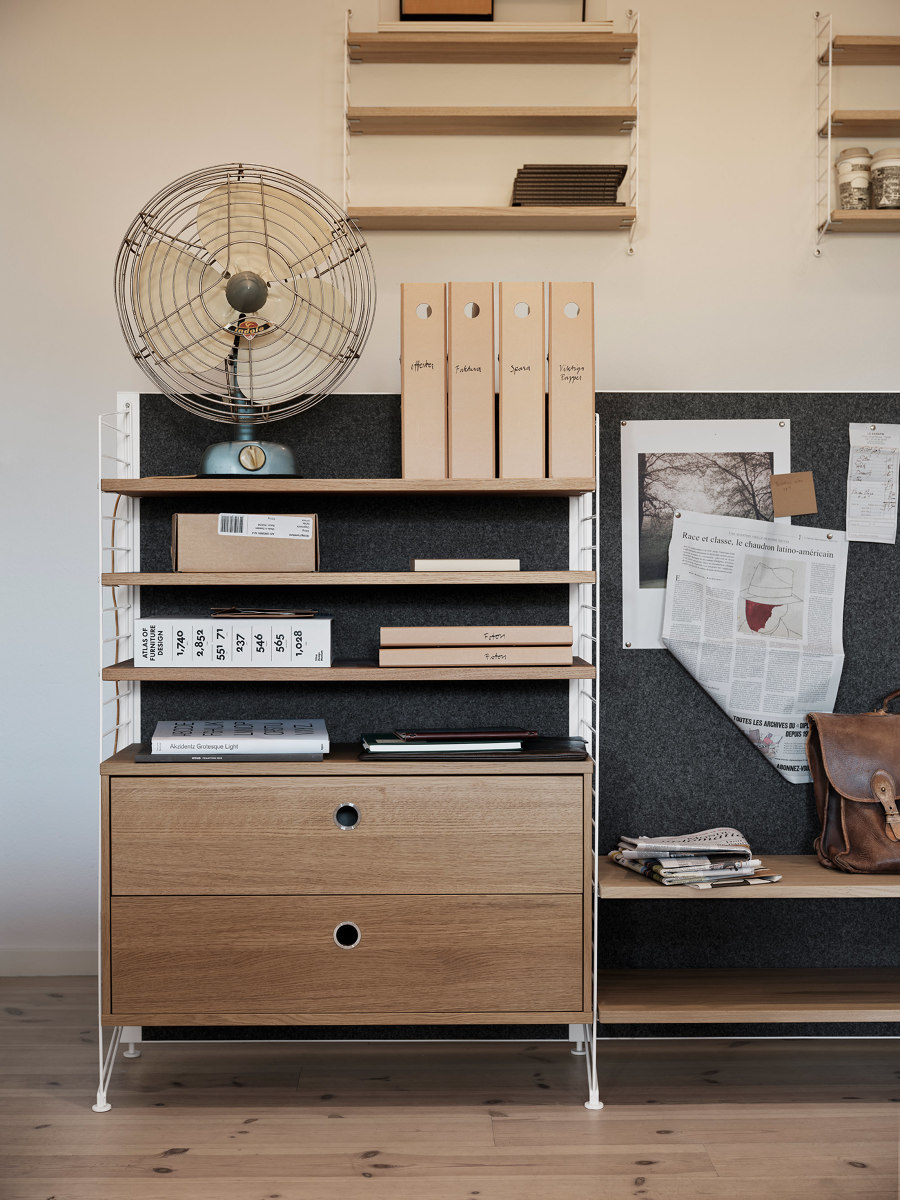
String Pocket, a compact floating version of String featuring three shelves, was developed in 2004 by Nisse Strinning, some 55 years after the original String shelving design was made
×Its popularity did wane during the eighties and nineties, which can be put down to the fact that for a while it remained lodged in old materials and combinations that harked back to its mid-century heyday. In 2004, the design had a rebirth and has since remained open-minded. ‘Adjusting a few things like the colour brought it back as a contemporary and classic piece of furniture,’ says Ingerstedt. ‘The design itself is so iconic that it is always clear it’s a String, no matter what colour.’ To help herald the brand’s new era, String Pocket was born, a development designed by Nisse Strinning himself. A miniature version, it is useful in housing paperbacks and displaying smaller objects.
Though originally conceived to bring books into the home, String Furniture looks at ease holding files or artwork, bags or plant pots. It works particularly well in a hybrid live/work environment
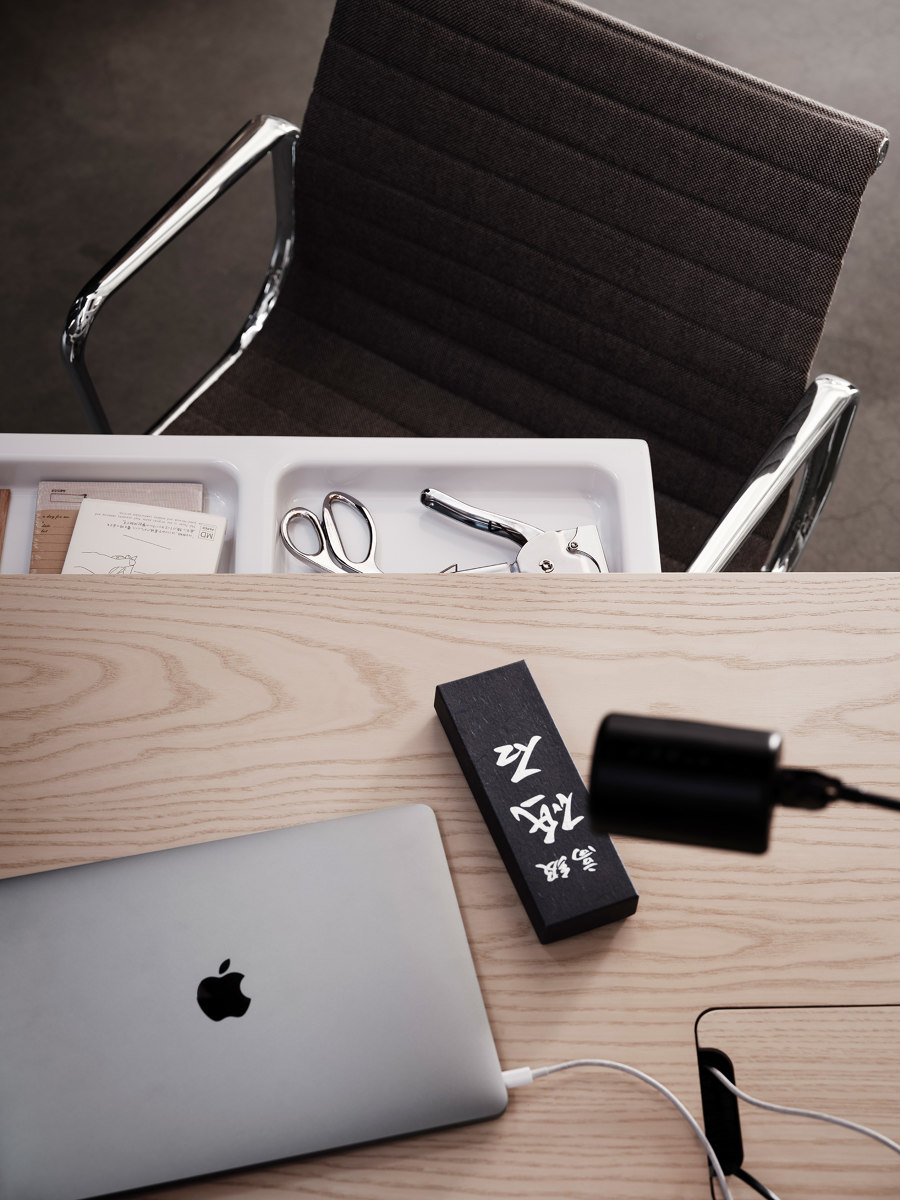
Though originally conceived to bring books into the home, String Furniture looks at ease holding files or artwork, bags or plant pots. It works particularly well in a hybrid live/work environment
×In 2014 String tested out its ‘timeless’ design muscles by introducing a new family of products, Works, designed by the architect Anna von Schewen and industrial designer Björn Dahlström. It comprises sit-stand desks, with accessories such as computer stands and storage components that integrate easily, alongside mobile storage units and screens. Its strength is to offer contemporary functionality while blending aesthetically with the existing String portfolio.
In 2019, String Outdoor launched to accommodate new domestic behaviours – namely outdoor living. Produced in galvanised steel, it has additional functionality that is relevant to life under the stars, such as a perforated tray for potting shed functionality and peg-board attachments. ‘By evolving colours, materials and functions you can always find a new relevance.’ adds Ingerstedt. And what is smart, is that String evolves not only with the big picture living trends, but with an individual’s own life arc – adapting to distinct individual needs over the course of a day, and over the decades.
The magic formula that produces a design classic is ever the conundrum of creatives, but it’s now not just guided by corporate gain, but by the needs of the planet too. Perhaps now, with over half a century of modern minimalist design under our belt, we can nail a few of the essential ingredients.
© Architonic








